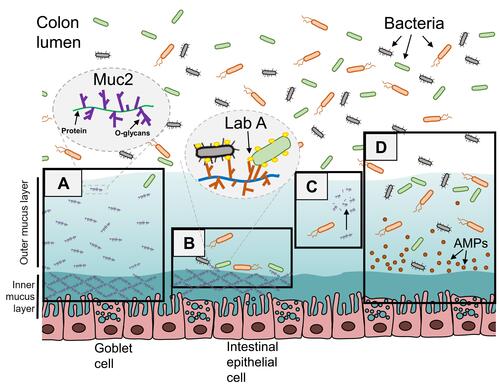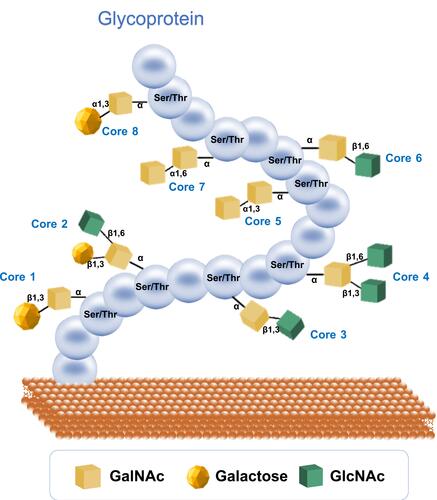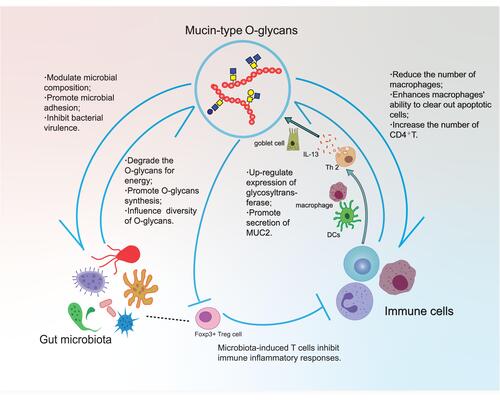Figures & data
Figure 1 Interactions between mucin-type O-glycans and intestinal flora. (A) The glycan distribution of the outer mucus is loose, and the glycan of the inner mucus interweaves into a network to act as the mucous membrane barrier; (B) LabA interacts with a lacdiNAc structure (GalNAcβ1-4GlcNAc) present on the mucin MUC5AC in the gastric mucosal layer; (C) Bacteria decompose glycans into oligosaccharides under the action of glycosidase and use it; (D) the antimicrobial peptides (AMPs) in the mucus1 are distributed in step concentration and inhibit bacteria pathogens in the mucus.

Figure 2 O-glycans structure core 1–8. Core 1 and core 2 structures are the most abundant out of the eight identified mammalians core structures. Core 1 structure is composed of galactose and is attached to the base GalNAc. Core 2 structure utilizes the core 1 structure complex with an addition of GlcNAc. Core 3 structure is produced by the addition of a GlcNAc to the TN antigen. Core 3 structure can be extended by the addition of a branching GlcNAc at the C6 hydroxyl group of GalNAc to form core 4 structure.

Table 1 Glycan-Degrading Bacteria Colonizing the Human GI Tract
Table 2 Intestinal Immune Cells Associated with O-Glycan
Figure 3 Association between mucin-Type O-glycans, microbiota, and immune cells. O-glycans regulate microbial composition, promote microbial adhesion, and inhibit bacterial virulence. Conversely, intestinal flora can degrade glycan for energy and also affect the composition of glycan. O-Glycans not only affect the number of various immune cells in the body, such as macrophages and CD4+T cells but also enhance the ability of macrophages to remove apoptotic cells. Immune cells mainly secrete inflammatory factors to promote mucin glycosylation. Lack of glycosylation can also affect microbial-related regulatory T cells, thereby inhibiting immune responses.

